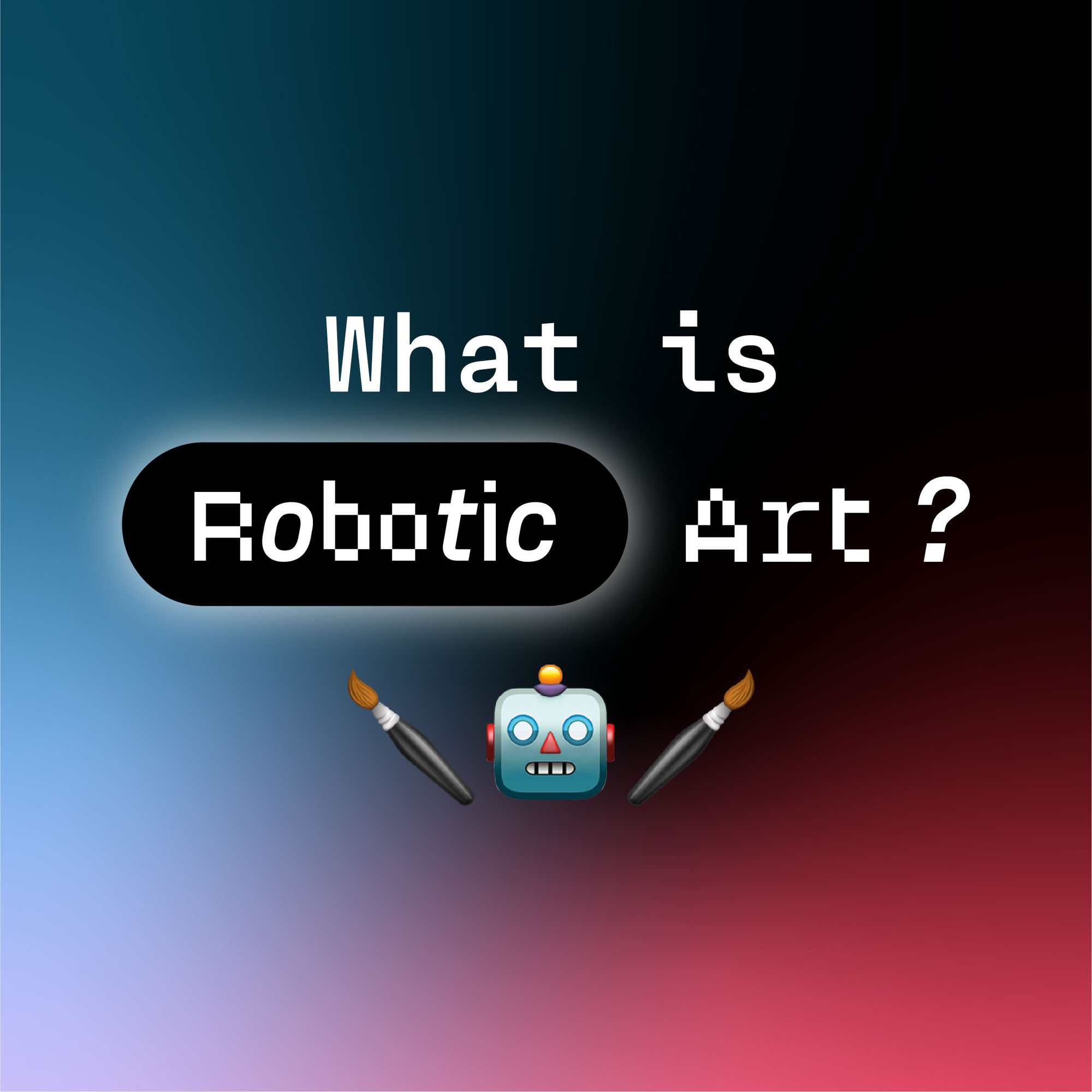What is Robotic Art?
By Terrain.art | Aug 2 2021 · 6 min read
What is Robotic Art?
Despite the recent buzz in recent times, art made with the help of artificial intelligence – more specifically robotic art – is not entirely new.
In ancient China, automation was used in theatre to create mechanized doves, fish, angels, dragons, etc. These automated figures were operated by hydraulics and were meant for the amusement of the emperor.
In the western world, Hero of Alexandria, an engineer and a mathematician, developed fully automated theatrical backdrops. Later, Leonardo Da Vinci’s prophetic mind sought to replace human labour and repetitive action with machinery. He left us drawings of early aircraft, sewing machines, and cannons.
With the progress in machine learning and deep learning, artists are now producing more complex and creative robot concept art using sophisticated algorithms that are capable of mimicking the neural network of the human brain. Here, we shall look at some of the most visionary artists of the 20th and 21st centuries who have contributed to the growing field of robotic art — starting from its humble beginnings in cybernetic art to more complex innovations in artificial intelligence.
While it remains out of scope of this blog to delve deep into AI art and what distinguishes it from traditional forms of art, you can check out our video glossary, where we offer in depth analysis of various genres of visual art.
Wen Ying Tsai and the Emergence of Cybernetic Art
The Chinese-born artist Wen Ying Tsai achieved international fame through his interactive cybernetic sculptures. Although there was no artificial intelligence involved in his work, they evinced a shift from static art to kinetic art — one that prioritizes movement and human interaction.
In 1965, while contemplating the shimmering of sunlight through trees, he decided to replicate the phenomenon in his work through the use of a stroboscope coupled with a feedback control system. His first feedback pieces were displayed at the Howard Wise Gallery in New York and astounded the critics and audiences alike. Titled Cybernetic Sculpture System No 1, the work showed a grove of slender stainless-steel rods rising from a base. The rods were lit by strobes and connected to light and sound sensors. As a result, whenever an onlooker made a sound in the vicinity, the rods moved, thereby achieving an interactive effect.
Nicolas Schöffer and Computational Intelligence
In the 1950s and 60s, the development of supercomputers gave a fillip to cybernetic art, which, in part, was also inspired by the cybernetic theories of Norbert Wiener. Hungarian-born, French artist Schöffer’s pioneering cybernetic sculpture CYSP 1 was the first artwork to use electronic computations developed by Philips Company. The whole sculpture, made from steel and aluminium, was set on a base mounted on four rollers, which contained the mechanism and an electronic brain built by Philips. The plates were operated by small motors located under their axis. Photo-electric cells and microphones built into the sculpture caught all the variations in the surrounding light and sound and elicited reactions on the part of the sculpture.
Harold Cohen and Early Artificial Intelligence
From simple kinetic and cybernetic art, we see a shift towards artificial intelligence with Harold Cohen during the seventies and eighties. Given the level of sophistication in today’s robot concept art, one might think that Cohen’s artworks are rather plain and simplistic. Nonetheless, it laid the foundation of robotic art that inspired generations of successive artists.
Cohen developed a robotic system called AARON, which could pick up a paintbrush and paint on canvases on its own. Unlike humans, who develop knowledge through experience, AARON acquired its knowledge cumulatively through data sets. However, since its actions were based on the data that had already been fed into its system, it could never break the rules of programming or imagine the possibility of drawing anything outside what it already knows. In that sense, AARON’s creativity was rather limited.
Simon Colton and Computational Creativity
Painting Fool, a software developed by Simon Colton of Imperial College of London in 2006, addressed many of the issues surrounding creative autonomy of robot concept art.
Unlike AARON, this software does not physically create artworks but comes up with stunning, often insightful, digital works of art, by researching the web on its own and interpreting complex, abstract concepts. For instance, it once created an original collage based on a 2009 news story about the war in Afghanistan, based on a juxtaposition of explosions, drone attacks, graves, etc.
Ai-Da and the Future of Robotic Art
Ai-Da — the world’s first ultra-realistic robot artist — perhaps marks the beginning of the next phase of robotic art. While, presently, there are many artists who collaborate with robots to create artwork, Ai-Da is the first AI-based robot that can come up with creative artworks with no human supervision or intervention. Named after English mathematician and writer Ada Lovelace, Ai-Da has progressed from abstract art to self-portraiture. Critics suggest that her artworks point towards a watershed moment in art history, where art can be created entirely without human intervention. While this may seem to unsettle many artists, her creator, gallerist Aidan Meller thinks that Ai-Da should be seen not as a threat but as an art project that is meant to generate debate on creativity and automation.

